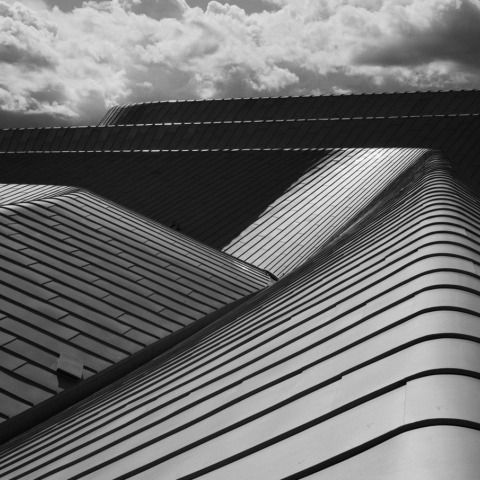Hélène Binet explained part of these relationship: “It’s like being a musician in front a big audience. You can’t get it wrong. In that instant, you have to be the best of yourself, you bring your mind to a place, not to lose that unique moment.”
Hélène Binet has explained many times her commitment to working with analogue techniques, as opposed to digital, photography, of carrying around heavy equipment, loading it with expensive film, of putting her head under the dark cloth of a large-format camera, of composing the scene and at the end to develop and print the results in a dark room.
In this intimate exhibition of around 90 photographs, spanning projects from across Binet’s career, it foreground her ability to capture the essential elements of architecture. A number of the works are handprinted in black and white at her North London studio, using an analogue camera and film. Binet’s powerful, thought-provoking images reveal the light, space and form that unites architecture, be it 1970s brutalism or an 18th-century City church.
A key highlight is a section focused primarily on Binet’s work with Zaha Hadid, with whom she built a close professional relationship and captured almost all of the late architect’s projects. Other buildings featured include the Thermal Baths at Vals by Peter Zumthor, Le Corbusier’s La Tourette monastery in France and the Jantar Mantar Observatory in India. Binet’s enquiring, contemplative approach to photography extends into her recent work, which includes a set of Five Churches in Cologne by Gottfried Böhm, or commissioned to celebrate the Jørn Utzon’s centenary, and his iconic Can Lis house, no alwys well know, in Mallorca island, Spain.































